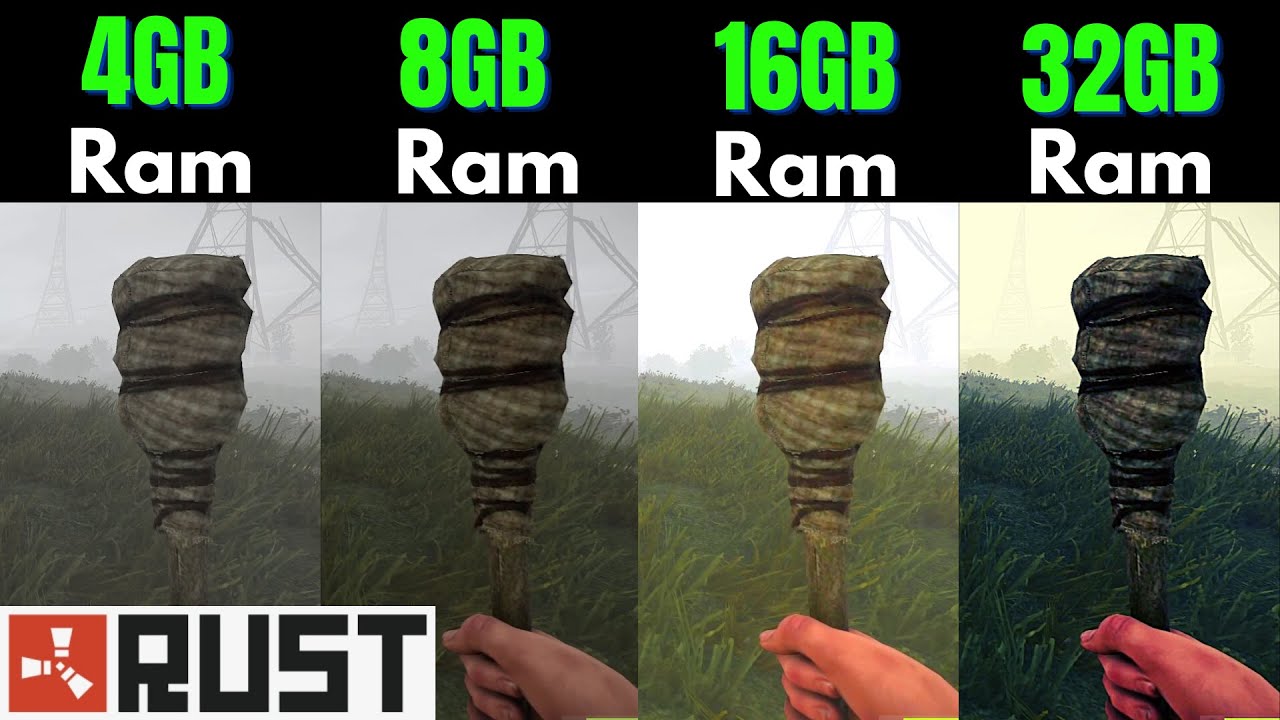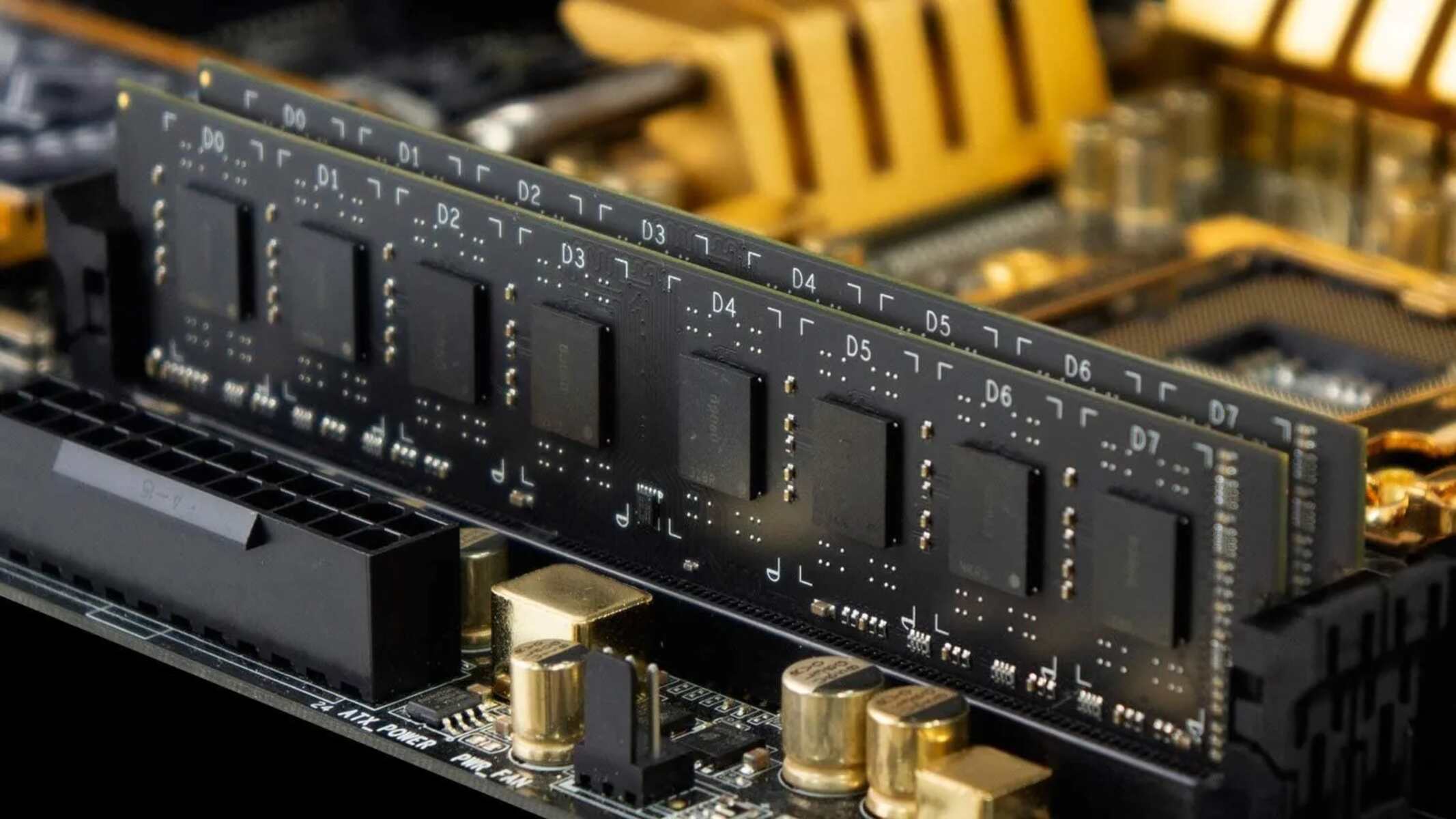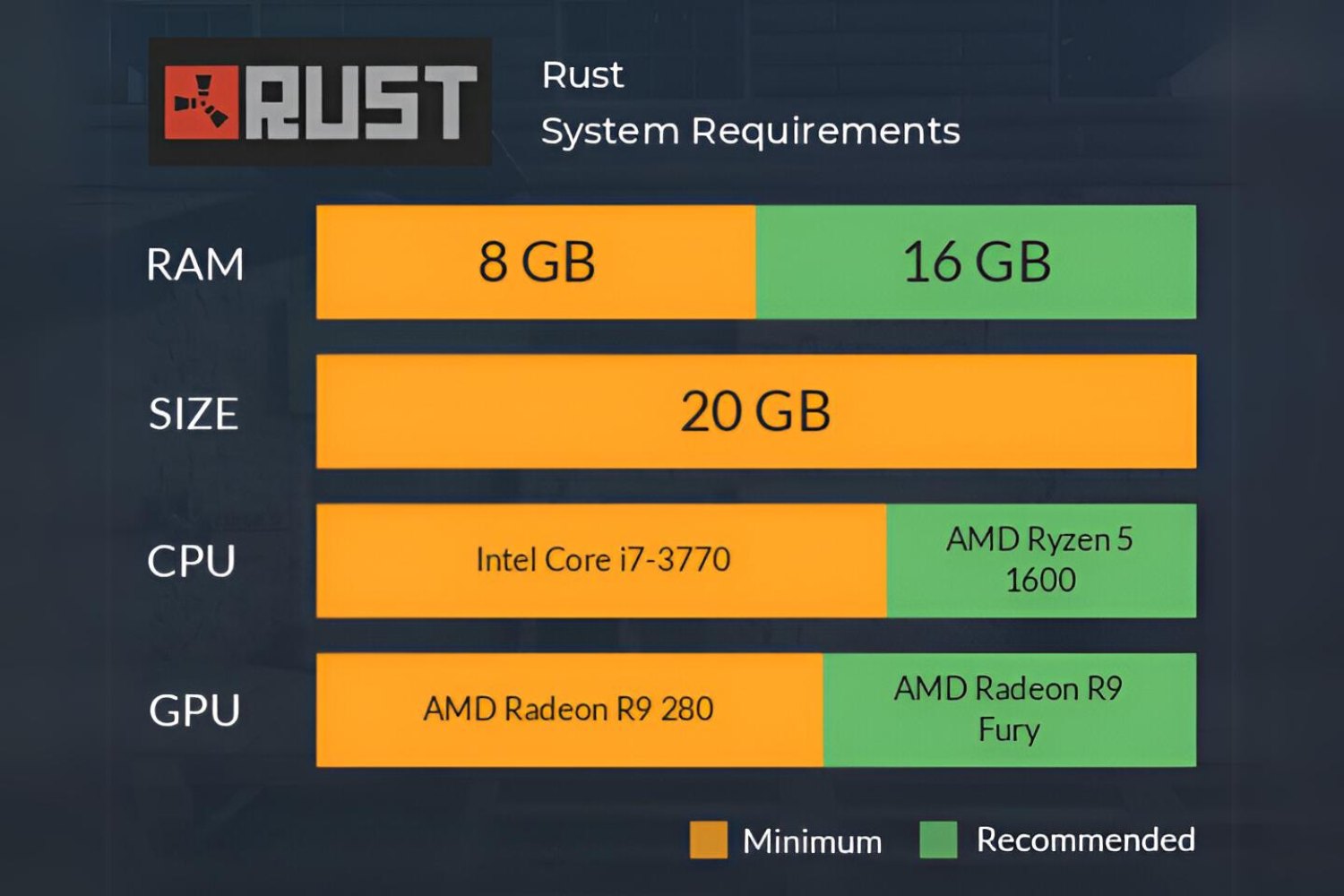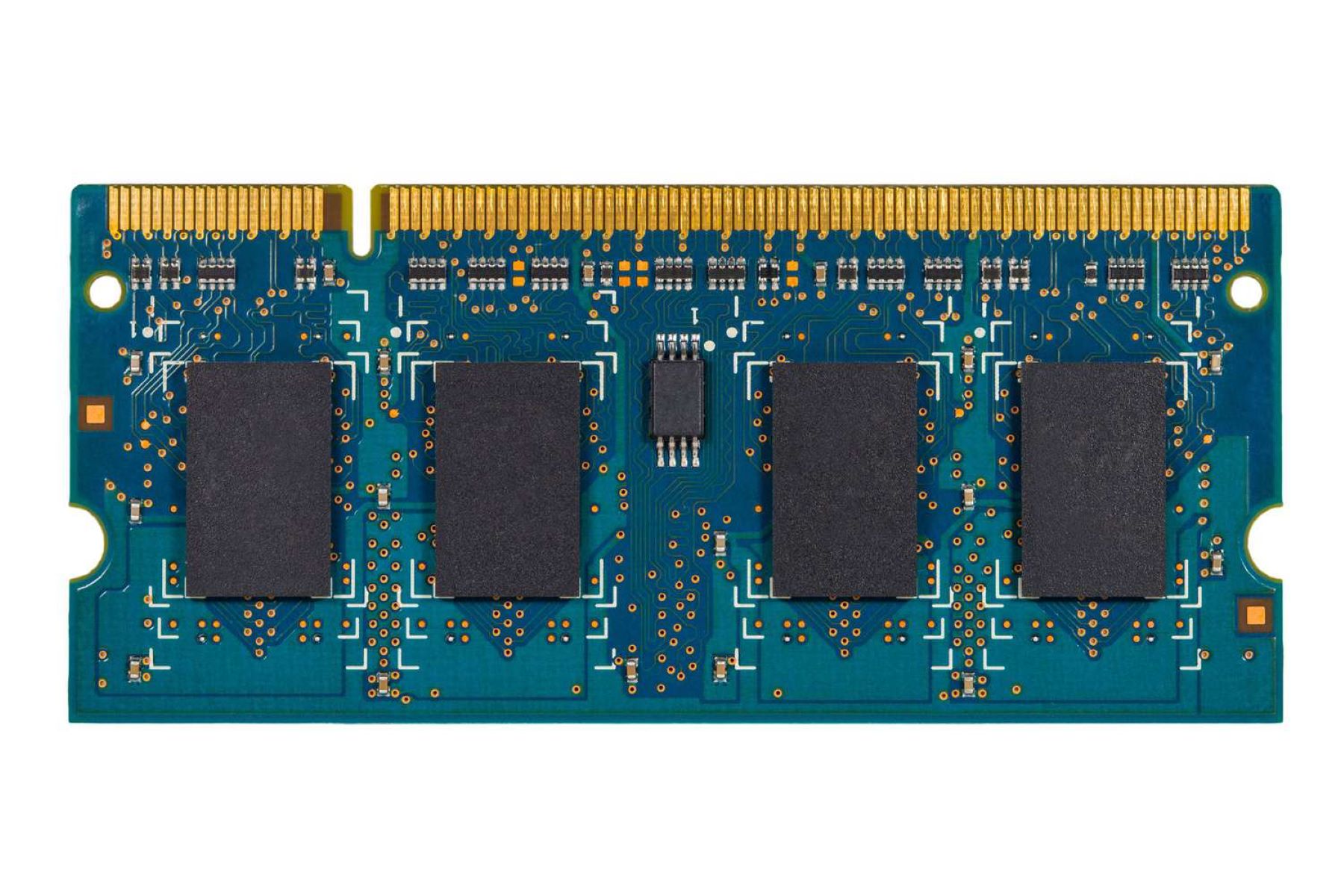Introduction
Welcome to the world of Rust – a programming language renowned for its memory safety, performance, and robustness. Whether you are a seasoned developer or someone just starting their journey, understanding the memory requirements of Rust is crucial for optimizing your code and ensuring efficient resource utilization.
Rust, like any other programming language, relies on RAM (Random Access Memory) to store and manipulate data during program execution. The amount of memory consumed by a Rust program depends on various factors, such as the size and complexity of the code, the number and types of variables used, and the data structures employed.
In this article, we will explore how Rust utilizes memory and delve into the factors that affect its memory consumption. We will also discuss benchmarks and techniques to optimize RAM usage in Rust, as well as tools for monitoring and managing memory consumption.
By the end of this article, you will have a solid understanding of how Rust utilizes RAM and be equipped with the knowledge to write efficient and memory-friendly code. So, let’s dive in and uncover the secrets of Rust’s memory footprint!
How Rust Uses Memory
Understanding how Rust utilizes memory is fundamental in optimizing the performance and efficiency of your code. Rust employs a strong ownership model and a sophisticated borrowing mechanism to ensure memory safety, eliminating common issues like null pointer dereference, buffer overflow, and memory leaks.
At its core, Rust distinguishes between data stored on the stack and data stored on the heap. Stack memory is managed automatically, with variables being pushed and popped off the stack as they go in and out of scope. This makes stack allocation fast and efficient, but it imposes some limitations on the maximum size of data that can be stored on the stack.
On the other hand, heap memory in Rust is managed explicitly using the ownership model. When a value is allocated on the heap, Rust assigns an owner to it, and only the owner has the authority to deallocate the memory once it’s no longer needed. This approach ensures that memory is managed properly, preventing dangling pointers and memory leaks.
Rust also provides mechanisms like reference counting with `Rc
Furthermore, Rust employs a sophisticated borrowing system that enables mutable and immutable borrowing of data. This mechanism allows multiple references to a value but enforces strict rules to prevent data races and undefined behavior. The borrow checker, a key component of Rust’s memory management, statically analyzes the code at compile time to ensure these rules are followed, making memory safety a compile-time guarantee.
By leveraging these features, Rust enables efficient memory utilization while maintaining high-level memory safety. Understanding these mechanisms is crucial for writing idiomatic Rust code that optimizes memory usage and avoids common pitfalls.
Understanding the Memory Allocation in Rust
When it comes to memory allocation in Rust, there are two main types to consider: stack allocation and heap allocation. Understanding how these allocations work is essential for optimizing memory usage in your Rust programs.
Stack allocation in Rust is fast and efficient. Variables declared on the stack are automatically allocated and deallocated as they come in and out of scope. This type of allocation is suitable for smaller, fixed-size data such as integers, booleans, and structs, as the stack has a limited size. Stack-allocated variables have a known size at compile time, which helps the compiler optimize memory usage.
Heap allocation, on the other hand, is used when dynamic memory allocation is required or when the size of the data is unknown at compile time. Rust provides several mechanisms for heap allocation, such as Box
When data is allocated on the heap in Rust, the memory is managed explicitly through the ownership model. This means that each heap-allocated value has a single owner, and it is the owner’s responsibility to deallocate the memory once it is no longer needed. This approach eliminates the need for garbage collection and ensures that resources are freed in a timely manner, avoiding memory leaks and other memory-related issues.
Additionally, Rust’s ownership and borrowing system allows for efficient memory usage by enabling the reuse of memory when possible. Ownership can be transferred between variables, and borrowing enables multiple references to the same data without the need for unnecessary duplication. This allows for efficient memory utilization and reduces the overhead associated with managing dynamically allocated memory.
It is important to note that Rust’s memory allocation model ensures memory safety and prevents common memory-related bugs like use-after-free and double-free vulnerabilities. The borrow checker enforces strict rules at compile time to ensure that memory is accessed correctly, eliminating the need for runtime checks and improving performance.
By understanding the different types of memory allocation in Rust and leveraging the ownership and borrowing mechanism, you can write efficient and memory-safe code that minimizes the memory footprint of your applications.
Factors That Affect the Amount of RAM Used by Rust
The amount of RAM used by a Rust program can vary depending on several factors. By understanding these factors, you can make informed decisions to optimize memory usage and improve the performance of your Rust applications.
1. Code Complexity: The complexity of your Rust code plays a significant role in determining the amount of RAM used. Large codebases with intricate logic and data structures generally require more memory than simpler programs. Evaluating the necessity of complex algorithms and data structures can help reduce memory usage.
2. Data Structures: The choice of data structures in your Rust code can heavily impact memory consumption. For example, using a Vec
3. Memory Allocation Patterns: The frequency and pattern of memory allocations in your Rust program can impact the overall RAM usage. Frequent allocations and deallocations can introduce memory fragmentation and overhead. Consider utilizing techniques like object pooling or preallocating memory to minimize the number of allocations and optimize memory utilization.
4. Input Data Size: The size of the input data that your Rust program processes can directly affect memory consumption. If your program operates on large datasets, it may require more RAM to store and manipulate that data. Optimizing algorithms and data structures to handle large datasets efficiently can help reduce memory usage.
5. External Dependencies: Rust programs often rely on external libraries or crates. These dependencies can introduce additional memory overhead, as each library may have its own allocations and memory requirements. Regularly review and update your dependencies to ensure they are efficient and actively maintained.
6. Compiler Optimizations: Rust’s compiler, `rustc`, applies various optimizations to your code. These optimizations, such as inlining functions or removing unnecessary allocations, can impact the amount of memory used by your program. Experiment with different optimization levels and compiler flags to find the right balance between memory usage and performance.
7. Hardware Limitations: The amount of RAM available on the hardware running your Rust program can also impact memory usage. Programs running on systems with limited memory may need to allocate and deallocate memory more carefully to avoid crashes or slowdowns.
By considering these factors and analyzing the specific requirements of your Rust program, you can optimize memory usage and create efficient applications that deliver optimal performance. It is important to strike a balance between memory consumption and maintaining code readability and maintainability.
Benchmarks: RAM Usage in Rust
Measuring the RAM usage of your Rust program is key to understanding its memory requirements and identifying any potential areas for optimization. Benchmarks can provide insights into the amount of memory consumed by different components of your code and help guide your optimization efforts.
To benchmark the RAM usage of your Rust program, you can use various tools such as `valgrind`, `perf`, or `massif`. These tools can analyze memory allocations, track memory leaks, and provide detailed reports on memory usage. Additionally, Rust provides built-in profiling tools like `cargo +nightly profiler` that enable you to analyze the memory consumption of your application.
When conducting benchmarks, consider running your code with different input sizes and scenarios that represent the typical usage patterns of your application. This will give you a more comprehensive understanding of how memory usage scales with different workloads.
Benchmarking can help identify memory-intensive parts of your code, such as data structures or algorithms that have room for improvement. By profiling these specific sections, you can identify opportunities to optimize memory usage by revisiting your data structures, improving memory allocation patterns, or reducing unnecessary memory overhead.
Furthermore, comparing the RAM usage of your Rust program with equivalent programs written in other languages can provide insights into Rust’s efficiency and memory handling capabilities. Rust’s focus on memory safety and performance often translates into more efficient memory control and lower memory consumption compared to languages like C++ or Java.
It is important to note that benchmarking should be performed on representative workloads and hardware configurations to ensure accurate results. The RAM usage of a Rust program can vary across different systems and runtime environments, so it’s crucial to test on target platforms to take hardware limitations into account.
Remember that benchmarks are not a one-time activity. As your code evolves and new optimizations are implemented, conducting regular benchmarks can help you track improvements in memory usage and identify any regressions.
By utilizing benchmarking tools and techniques, you can gain valuable insights into the RAM usage of your Rust program. This knowledge can guide your optimization efforts and help you create more efficient and performant applications.
Optimizing RAM Usage in Rust
Optimizing the RAM usage of your Rust programs is essential for improving performance, reducing memory footprint, and ensuring efficient resource utilization. Here are some effective strategies to optimize RAM usage in Rust:
1. Use Appropriate Data Structures: Choose data structures that best fit your program’s requirements and optimize memory usage. Consider using fixed-size arrays instead of dynamic containers like Vec
2. Minimize Copying and Allocation: Reduce unnecessary copying and allocation of data by borrowing and reusing resources whenever possible. Leverage Rust’s ownership model and borrowing system to minimize the number of unnecessary memory allocations and deallocations.
3. Optimize String Handling: String operations can be memory-intensive. Avoid unnecessary string concatenation or cloning by using string slices, borrowing, and string builders where appropriate. Consider using `String` instead of `&str` when you need to own and mutate the string content.
4. Implement Object Pooling: Object pooling is a technique where you reuse objects instead of repeatedly allocating and deallocating them. This reduces memory fragmentation and allocation overhead. Implement object pooling for frequently used objects or data structures to optimize memory usage in resource-intensive scenarios.
5. Consider Lazy Initialization: Lazily initializing data structures can help reduce memory usage by deferring allocation until the data is actually needed. This can be beneficial when dealing with large datasets or resource-heavy computations. Use lazy initialization techniques to allocate resources on-demand and free them when they are no longer needed.
6. Enable Compiler Optimization: Rust’s compiler, `rustc`, performs various optimizations that can improve memory usage. Enable compiler optimizations by specifying the appropriate optimization level and compiler flags when building your program. Experiment with different optimization levels to find the balance between performance and memory consumption.
7. Profile and Refactor Critical Sections: Identify critical sections of your code that consume significant amounts of memory. Profile these sections to better understand their memory usage patterns. Optimize memory usage in these sections by revisiting your algorithms, data structures, and memory allocation patterns. Consider refactoring or optimizing these sections to reduce memory overhead.
8. Profile and Eliminate Memory Leaks: Memory leaks can gradually accumulate and severely affect your Rust program’s memory usage. Use profiling tools to identify any potential memory leaks and ensure that memory allocated dynamically is being released properly.
By implementing these optimization techniques and regularly profiling your Rust programs, you can effectively reduce RAM usage, improve performance, and create resource-efficient applications.
Tools and Techniques for Monitoring and Managing Rust’s RAM Consumption
Monitoring and managing RAM consumption in your Rust programs is crucial for maintaining efficient memory usage and identifying potential issues. Fortunately, there are several tools and techniques available to help you in this regard:
1. Rust Profiling Tools: Rust provides built-in profiling tools that can help you analyze the memory consumption of your applications. The `cargo +nightly profiler` command enables you to capture and analyze profiling data, including memory usage. This can assist in identifying memory-intensive sections of your code and optimizing memory usage.
2. Third-Party Profiling Tools: Several third-party profiling tools can be used to monitor and analyze memory consumption in your Rust programs. Tools like `valgrind`, `perf`, or `massif` provide detailed insights into memory allocations, memory leaks, and overall memory usage. These tools can help you pinpoint areas of your code that require optimization.
3. Manual Memory Management: While Rust’s ownership and borrowing mechanism handle memory management automatically, there may be cases where you need more fine-grained control. Rust allows you to manually manage memory using raw pointers, although it requires careful consideration to ensure memory safety. Manual memory management can be useful in specific scenarios where you need full control over resource allocation and deallocation.
4. Heap Profiling: Heap profiling tools like `heaptrack` can help you understand memory allocations and deallocations in detail. They can identify memory leaks and highlight areas of your code that contribute to excessive memory consumption. By analyzing heap profiles, you can pinpoint memory leaks and optimize memory usage in your Rust programs.
5. Memory Allocation Libraries: Libraries like `jemalloc` and `mimalloc` offer alternative memory allocation strategies that can potentially improve memory usage in your Rust programs. These libraries provide efficient memory allocation algorithms and optimizations, reducing memory fragmentation and improving overall performance.
6. Memory Analysis Tools: Tools like `Rust Analyzer` and `cargo-audit` can help analyze your code for potential memory-related issues. They can detect potential memory leaks, uninitialized variables, and unsafe memory access. Integrating these tools into your development workflow can ensure that your code adheres to memory safety best practices.
7. Regular Code Reviews and Testing: Conducting thorough code reviews and running comprehensive tests are essential to identifying and addressing memory-related issues. Encourage your team members to review each other’s code, paying special attention to memory allocations, deallocations, and data structures. Make use of integrated testing frameworks to ensure memory safety and optimize memory usage.
By utilizing these tools and techniques, you can effectively monitor and manage the RAM consumption of your Rust programs. This will help you identify areas for optimization, ensure memory safety, and create efficient and high-performing applications.
Conclusion
Understanding and optimizing RAM usage in Rust is crucial for creating efficient and high-performing applications. By leveraging Rust’s ownership model, borrowing system, and various memory management techniques, you can effectively minimize memory footprint, reduce memory leaks, and improve overall performance.
In this article, we explored how Rust utilizes memory, distinguishing between stack and heap allocation. We also discussed factors that impact RAM usage, such as code complexity, data structures, and hardware limitations. Additionally, we examined the importance of benchmarking to measure memory consumption and identify areas for optimization.
We also delved into techniques for optimizing RAM usage in Rust, including using appropriate data structures, minimizing copying and allocation, and implementing object pooling or lazy initialization. Furthermore, we discussed tools and techniques for monitoring and managing Rust’s RAM consumption, such as profiling tools, memory analysis tools, and third-party libraries for memory allocation optimization.
By following these best practices and utilizing the tools and techniques mentioned, you can create Rust programs that effectively manage memory, reducing resource usage and improving efficiency. Regularly profiling and benchmarking your code, along with conducting thorough code reviews and testing, will ensure that your applications remain performant and memory-safe.
Remember that optimizing RAM usage is an ongoing process. As your codebase evolves and requirements change, it’s important to revisit your memory management strategies and continue to measure and optimize memory usage.
In the end, optimizing RAM usage in Rust is not just about improving performance but also about good software engineering practices. By consciously managing memory and minimizing wasteful resource usage, you can create applications that are not only efficient but also reliable and scalable.

























